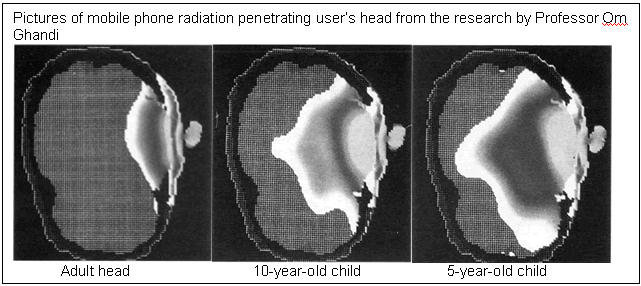 |
 |
|
 |
 |
About Us | Contact |
|
|
02/12/2005 - Another company goes for the kidsA new mobile phone deliberately designed for use by young children under 10 years old has been launched in the UK by Teddyfone Ltd. It designed to look like a teddy bear that we believe will only really appeal to girls under 8 and boys under about 6 or 7 years old. The following statement was made by Sir William Stewart, a previous UK Chief Scientist, at a press conference early in 2005: "If there are risks, and we think that maybe there
are, then the people most likely to be affected are children, and the
younger the children, the greater the danger."
Sir William Stewart, Sir William said that no children under the age of 9 should have a phone at all, and all children under 16 should only use phones in emergencies or for really short important calls. The "Teddyfone" is claimed to increase "mobile parenting" and "safety" for children. The Teddyfone has no screen, 4 speed-dial buttons designed to be pre-programmed by parents, a parent activated a "child monitor" option that allows parents to listen to their child's environment, and an SOS button which automatically sends a pre-programmed text message to 3 assigned numbers. The truth of the matter is there is simply no evidence that mobile communication makes children any safer. If someone kidnaps a child, the first thing to go would be the mobile phone, so even if the child had managed to get out an SOS signal (which could be a false alarm anyway), there is no way that anyone could get to the location of the phone before the kidnappers are long gone. Simon Holland, co-founder of TeddyFone said in their press release:"Like many others, I was horrified by the Soham murders and saddened by the effect on parenting." It may be news to Simon that Jessica Chapman did have a working phone on her at the start of the Soham tragedy, but it did not help her. It was switched off and thrown into a field. Update (21/07/2006)The British Government has blamed the 8% increase in street robberies and muggings on MP3 players and Mobile Phones, which backs up the argument that having a phone on you does not make you safer: [View BBC Source] Don't get us wrong, the safety of your children is of paramount importance, but without any real evidence that having a phone will help, marketing a phone on this premise is extremely misleading and may put your child at greater risk if, as a result, you let them go out to places you wouldn't normally. SAR values Teddyfone explain how an average phone has a SAR value of 1.6 W/kg (which is debatable, a quick look here shows 388 different models of phones, of which the average is 0.8 W/kg, 50% of the claimed value), and that the Teddyfone has the "lowest SAR value on the market" (0.2 W/kg), despite the fact that two phones on the list (the Sony Ericsson TZ600 and the Motorola MPX200) are lower, the latter by a whole 40%. Even so, SAR values are very misleading. The SAR value represents the absorption from the phone operating at it's maximum power, whereas in reality phones (especially in areas of good signal) rarely operate anywhere near this level, and can function at as much as 1000 times lower. Far more relevant would be the "average" SAR value for the phone, but due to signal levels and other environmental constraints this is not feasibly measurable, though phones with visible external antennas (unlike the Teddyfone) seem to be better at running at lower power than those with internal antennas. If they have reduced the SAR by means of lowering the phone's output power, then a side-effect of this will be that the phone may not work in vehicles or low signal areas. For a phone sold primarily on the merit of increased safety this is largely self-defeating. Blood-brain barrierThere has been some extremely interesting research showing that exposure to the pulsing microwave radiation from mobile phones allows albumin and other toxins to cross the blood brain barrier and damage your brain. The following is an example from a recent study ("Nerve cell damage in mammalian brain after exposure to microwaves from GSM mobile phones.") showing brain cell death in rats who were exposed to mobile phones:  This page has links to content that requires a .pdf reader such as |

